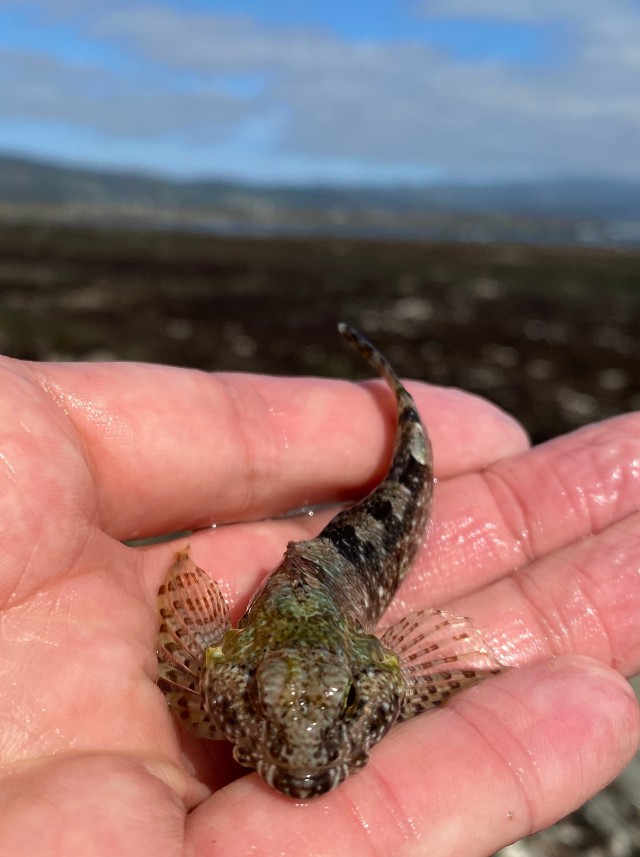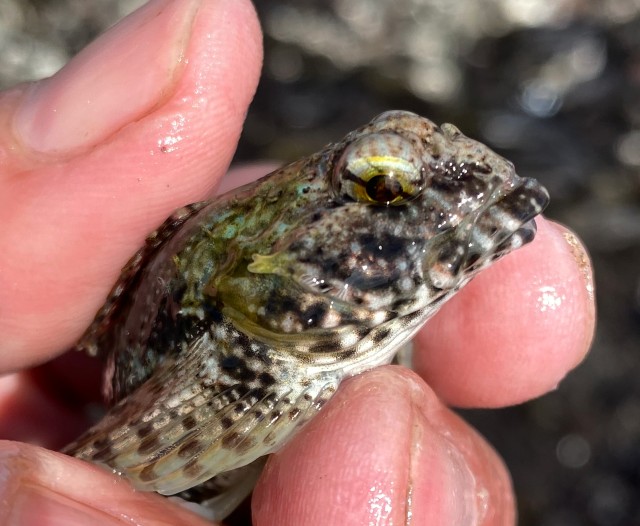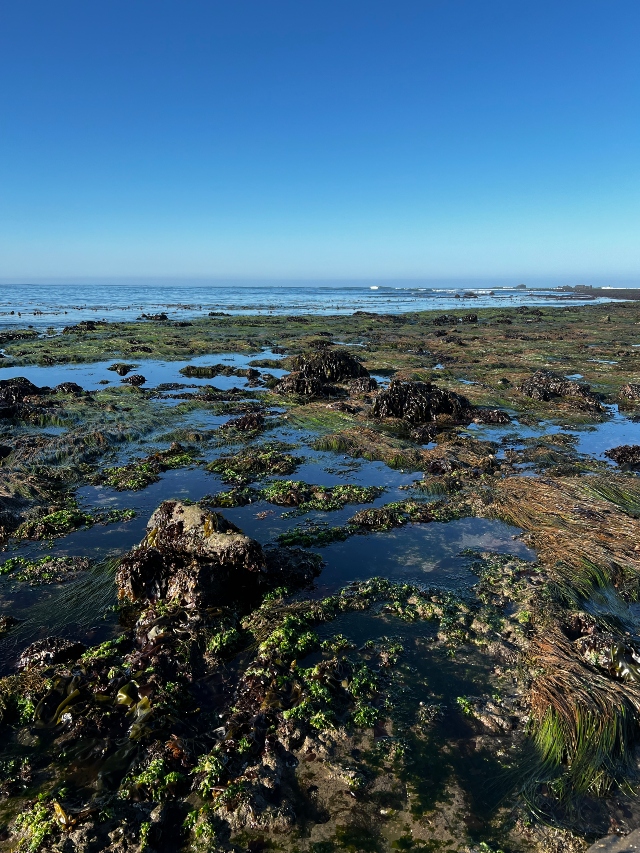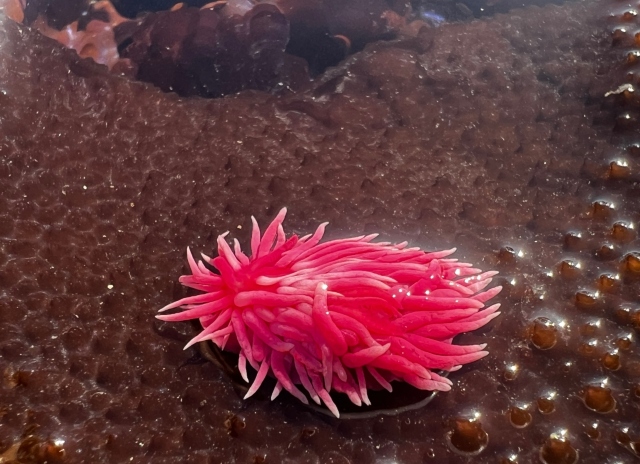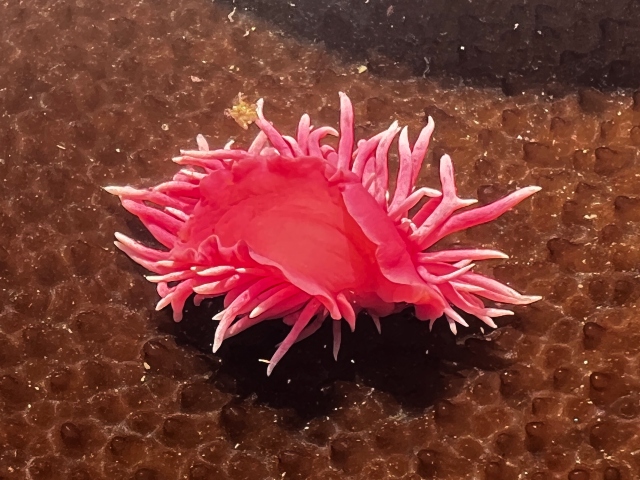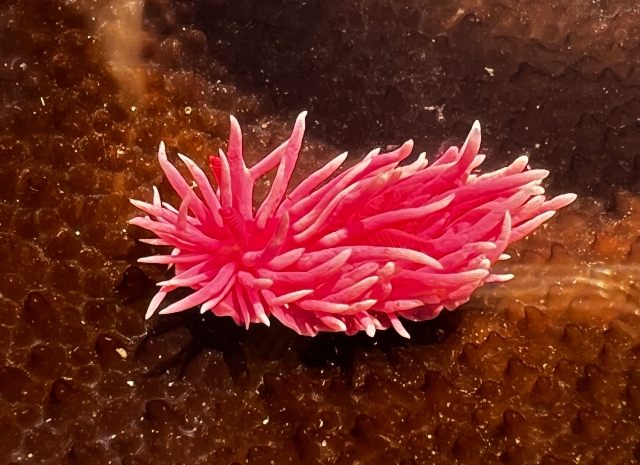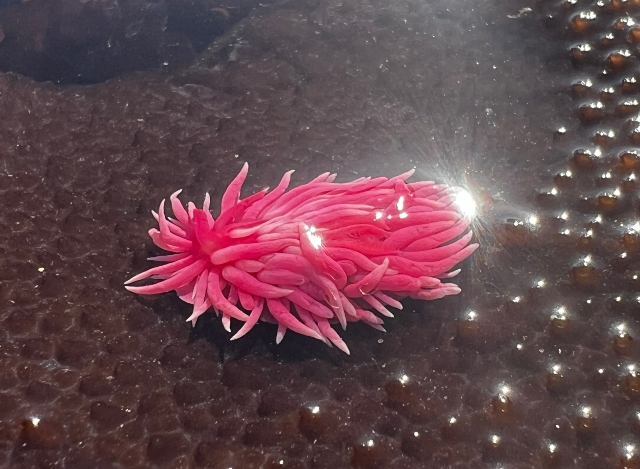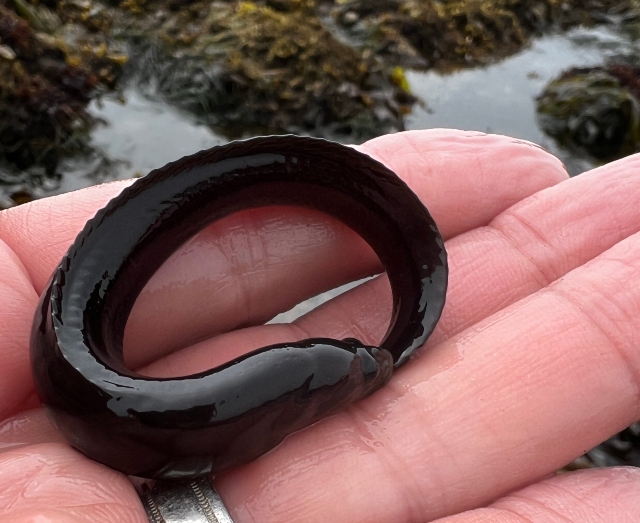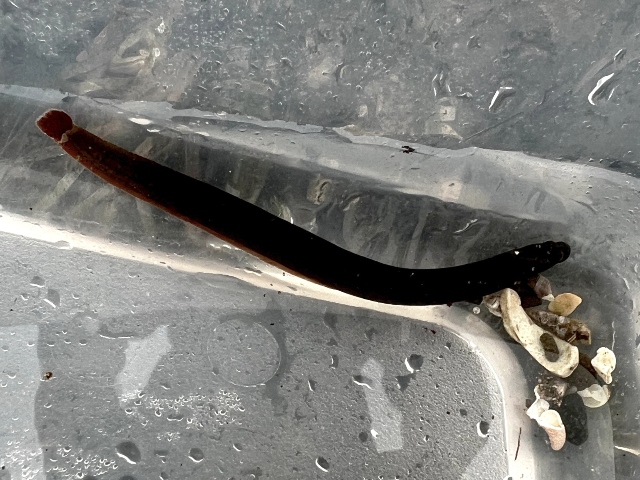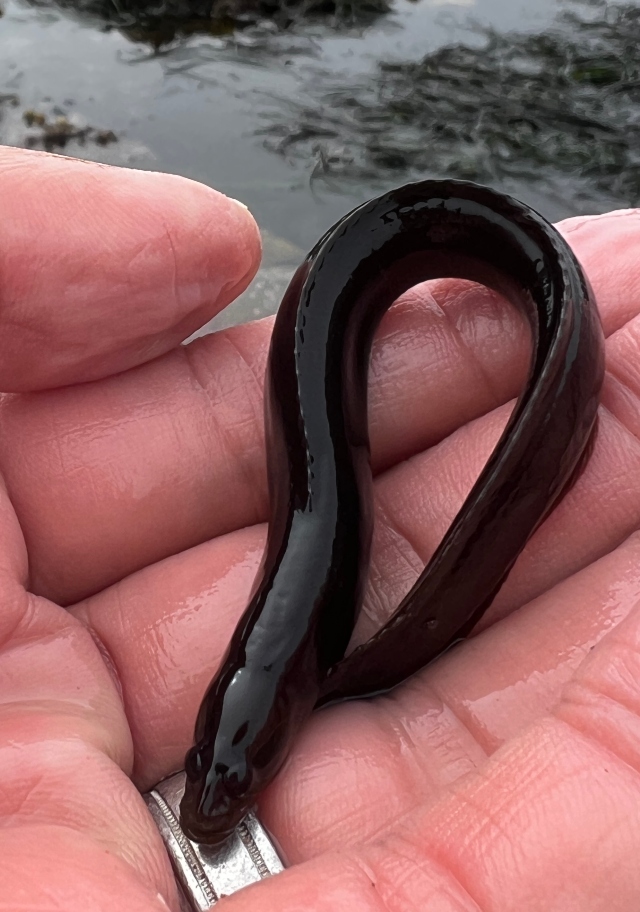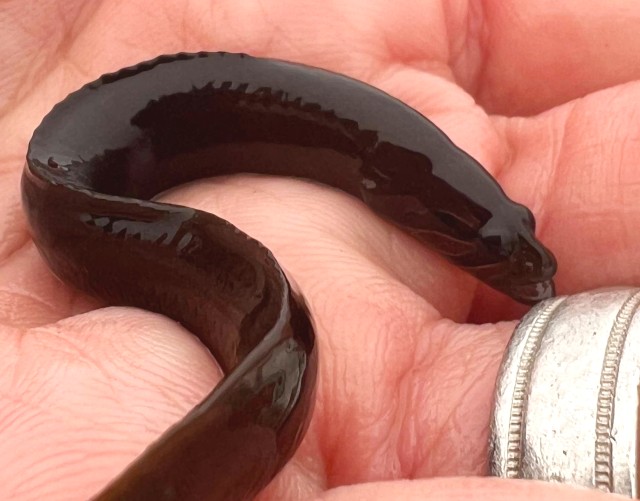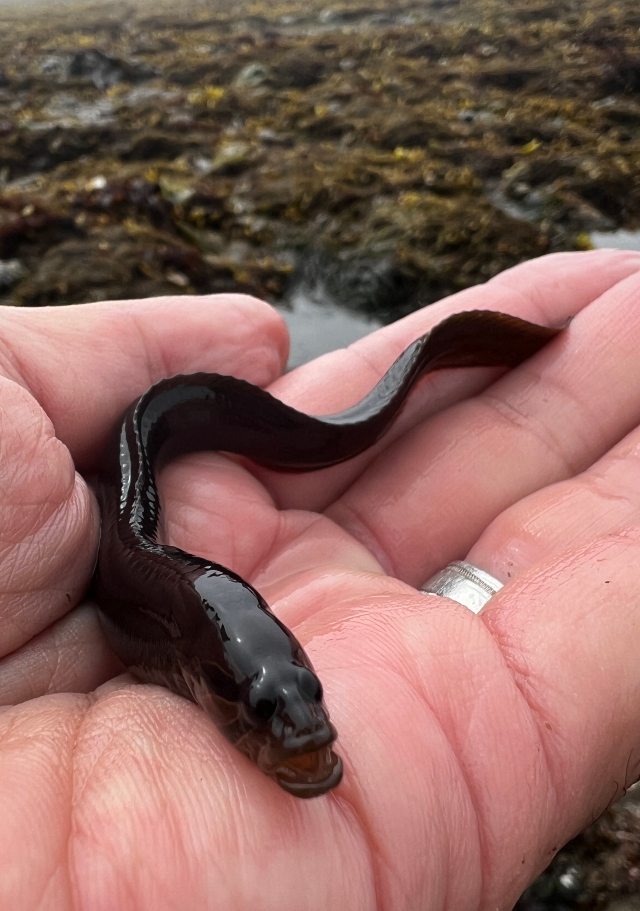I’ve caught a few examples of this cool fish when tidepooling in the San Francisco Area. It gets the common name “woolly” from the abundant hairlike filaments present on its head and alongside its dorsal fin. This common tidepool creature has a lifespan of 6 to 8 years.
The Woolly Sculpin has an elongated, tapering body with a large, depressed, flattened, and wide head. They are speckled and mottled and come in a wide variety of colors, including green, greenish-black, and brown; some also have reddish tinges.
This is a demersal (lives and feeds on or near the bottom of seas or lakes) species that is found within sand, gravel, small rocks, and bedrock and in intertidal areas among algae beds at depths up to 60 feet. They are ambush predators that lie in wait for prey and are active 24 hours a day.
This fish’s diet includes mainly crustaceans (especially amphipods), as well as fish eggs and larvae, polychaetes, and mollusks. Most of its food items are light-colored or clear, suggesting that these are easiest for the fish to see against the dark background of its habitat.
The Woolly Sculpin can change its colors to match its background. It can also breathe air through its skin, allowing it to survive out of the water for up to 24 hours. Its most significant predators are Great Blue Herons and other shore birds, as well as larger fish and crabs.
It was fun encountering this neat fish and seeing the range of its many colors and patterns.


